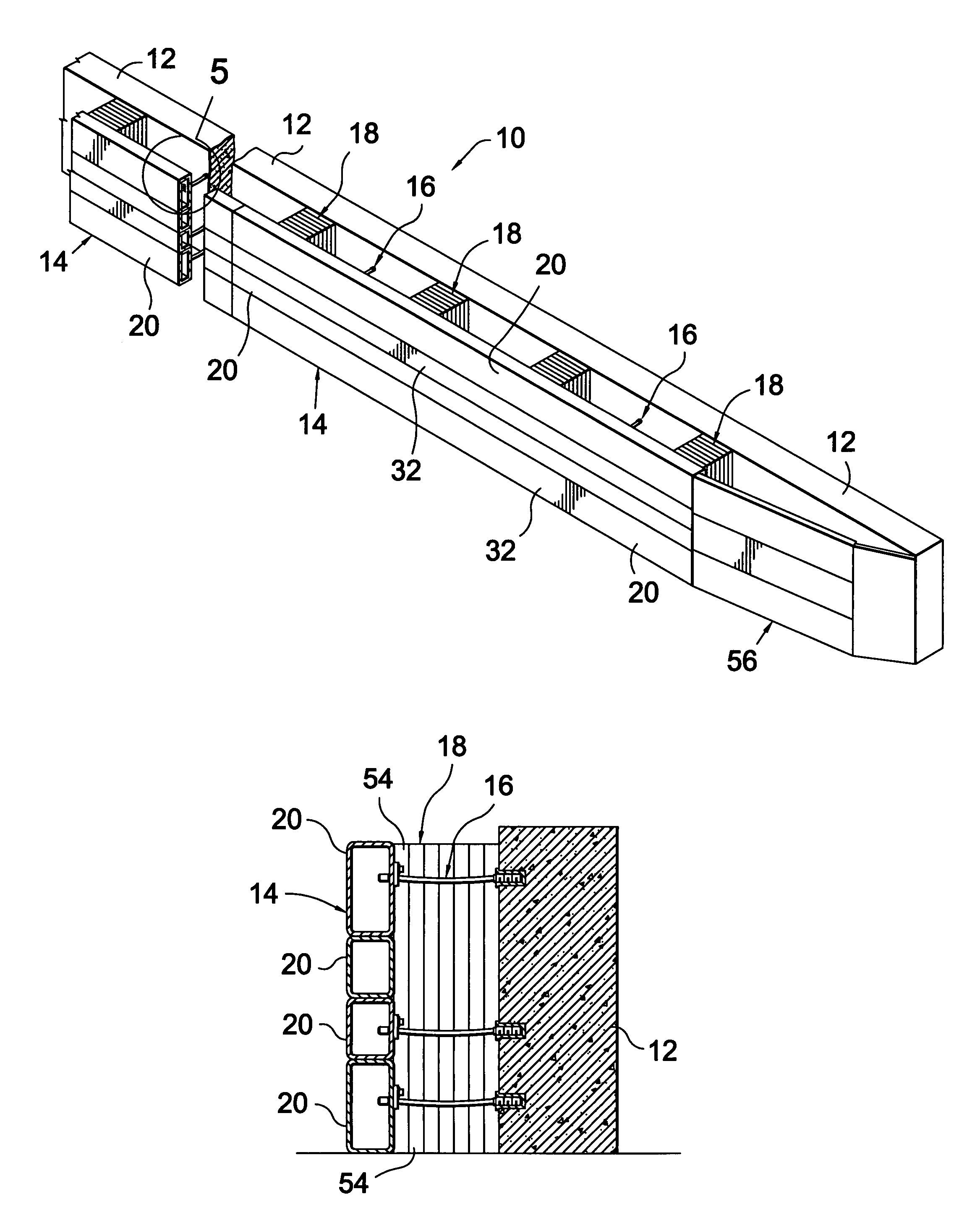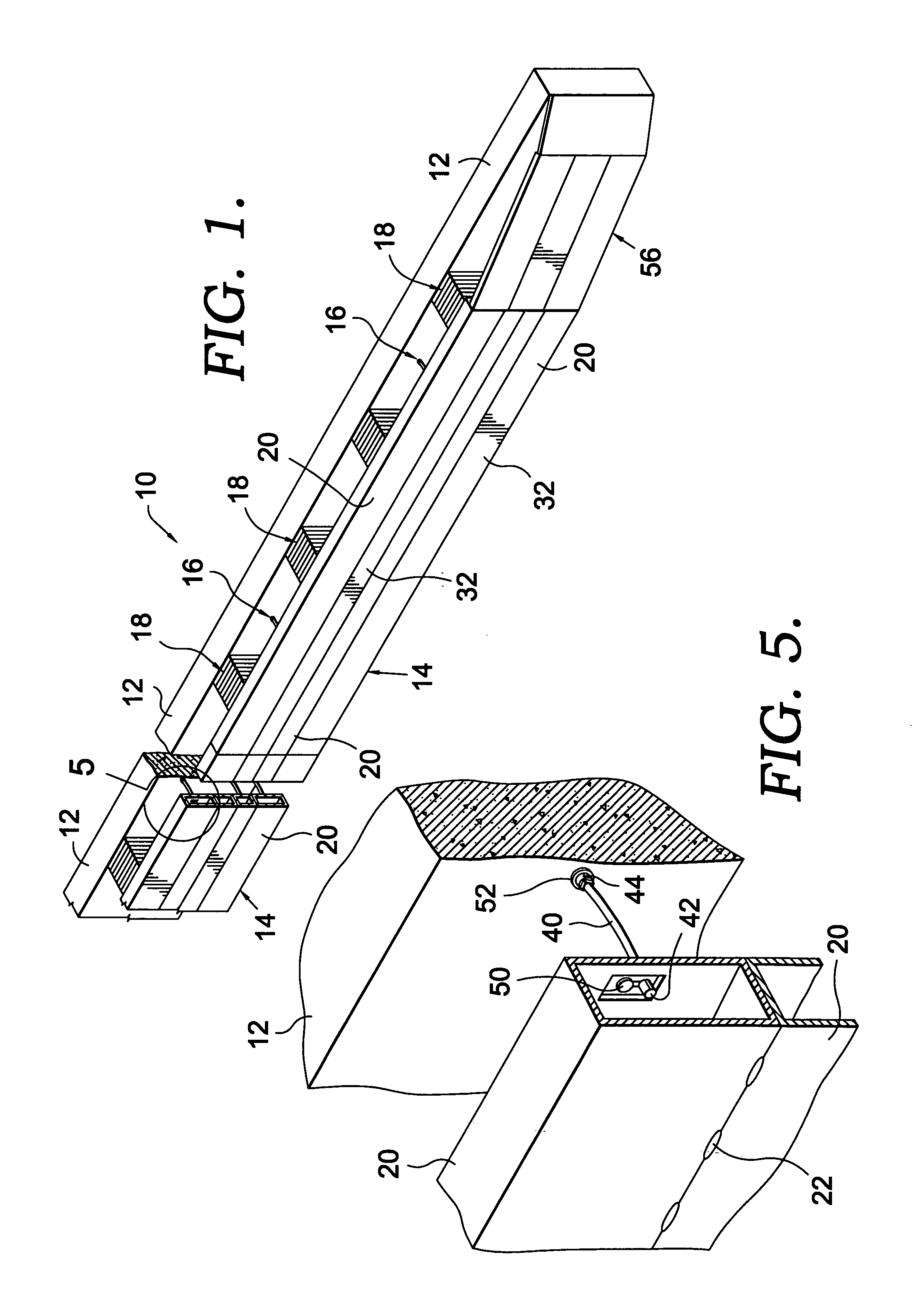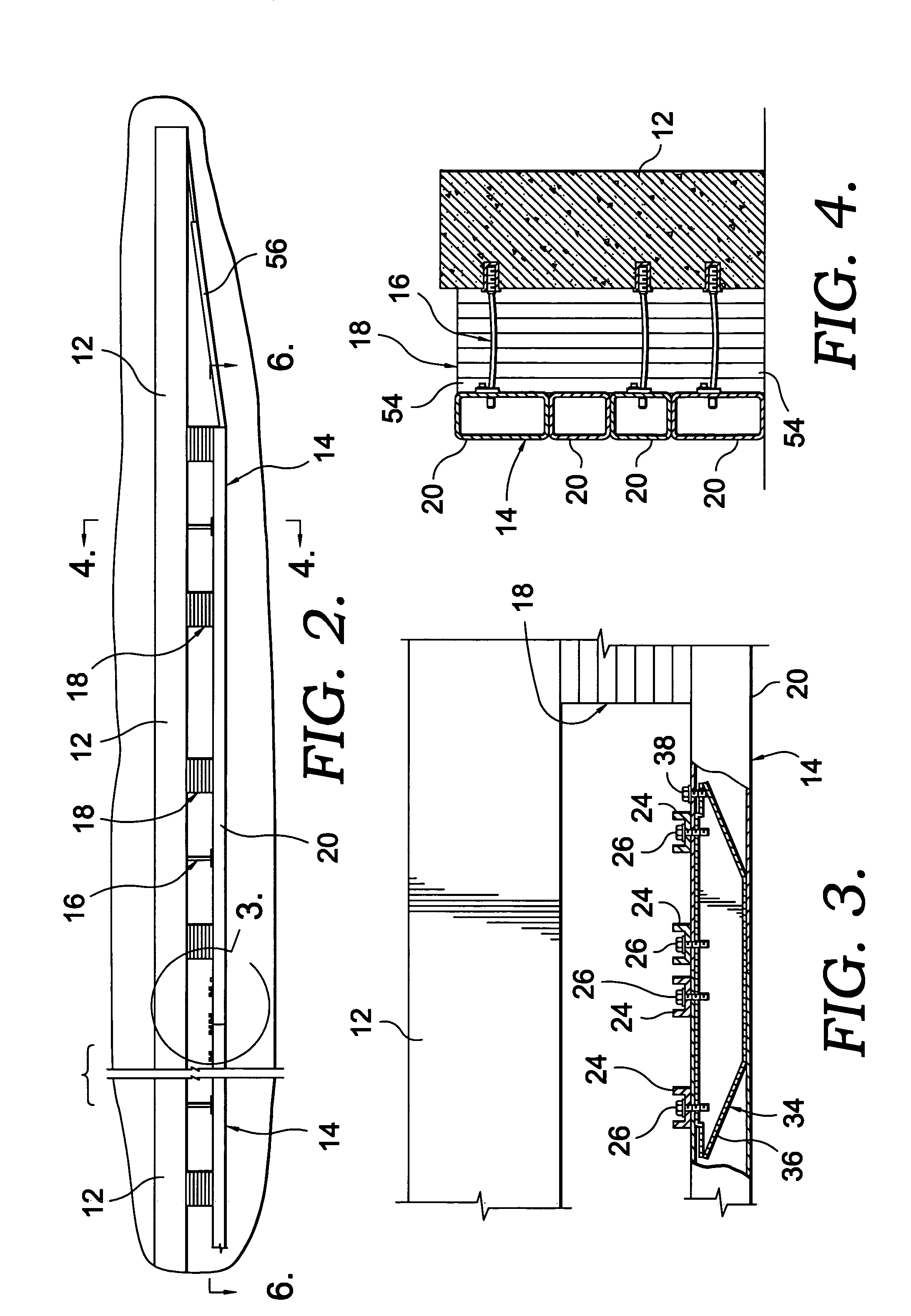High-impact, energy-absorbing vehicle barrier system
a vehicle barrier and high-impact technology, applied in roadway safety arrangements, roads, construction, etc., can solve the problems of high-impact energy, strike the retaining wall, driver injuries and fatalities, etc., to reduce the potentially harmful deceleration force, reduce or eliminate the potential for vehicle pocketing, gouging, or snagging, and improve safety. the effect of safety
- Summary
- Abstract
- Description
- Claims
- Application Information
AI Technical Summary
Benefits of technology
Problems solved by technology
Method used
Image
Examples
Embodiment Construction
[0025]Referring to the drawings in greater detail, and initially to FIG. 1, a high-impact, energy-absorbing vehicle barrier system of the present invention is designated by the numeral 10. The barrier system 10 generally includes a substantially rigid containment wall 12, an energy-absorbing impact wall 14, a number of cable restraint assemblies 16 coupling the containment wall 12 with the impact wall 14, and a number of energy-absorbing cartridges 18 positioned between the containment wall 12 and the impact wall 14. It will be understood that the walls 12 and 14 of the barrier system 10 may be relatively straight (as depicted in FIG. 1) for use adjacent race track straightaways, for example, and / or the walls 12 and 14 may be curved for barrier system 10 installations adjacent to race track or roadway turns having a radius.
[0026]The containment wall 12 is generally constructed of heavily reinforced concrete, but may be constructed of steel, stone, or other substantially rigid materi...
PUM
 Login to View More
Login to View More Abstract
Description
Claims
Application Information
 Login to View More
Login to View More - R&D
- Intellectual Property
- Life Sciences
- Materials
- Tech Scout
- Unparalleled Data Quality
- Higher Quality Content
- 60% Fewer Hallucinations
Browse by: Latest US Patents, China's latest patents, Technical Efficacy Thesaurus, Application Domain, Technology Topic, Popular Technical Reports.
© 2025 PatSnap. All rights reserved.Legal|Privacy policy|Modern Slavery Act Transparency Statement|Sitemap|About US| Contact US: help@patsnap.com



